An Investigation of Spiral Dislocation Sources Using Discrete Dislocation Dynamics (DDD) Simulations
Abstract
:1. Introduction
2. Method
3. Simulation Results and Discussion
3.1. Spiral Dislocation Configuration in a Large Simulation Box (without Surface Effect)
3.2. DDD Simulations for the Study of Size–Scale Effect (without Surface Effect)
3.3. Simulations for Multiple Spiral Dislocation Sources (without Surface Effect)
3.3.1. Frank–Read Source Generation from Spiral Dislocation Sources
3.3.2. Simulations for Multipoles
3.4. Simulations for a Single Spiral Dislocation with Surface Effect
4. Conclusions
Author Contributions
Funding
Data Availability Statement
Conflicts of Interest
References
- Hull, D.; Bacon, D.J. Introduction to Dislocations, 5th ed.; Butterworth-Heinemann: New York, NY, USA, 2011. [Google Scholar]
- Hirth, J.P.; Lothe, J. Theory of Dislocations, 2nd ed.; Krieger: Malabar, FL, USA, 1992. [Google Scholar]
- Authier, A.; Lang, A.R. Three-Dimensional X-Ray Topographic Studies of Internal Dislocation Sources in Silicon. J. Appl. Phys. 1964, 35, 1956–4959. [Google Scholar] [CrossRef]
- Surek, T.; Pound, G.M.; Hirth, J.P. Spiral dislocation dynamics in crystal evaporation. J. Surf. Sci. 1974, 41, 77–101. [Google Scholar] [CrossRef]
- Maia, A.V.D.M.; Bakke, K. Harmonic oscillator in an elastic medium with a spiral dislocation. Phys. B Condens. Matter 2018, 531, 213–215. [Google Scholar] [CrossRef] [Green Version]
- Maia, A.V.D.M.; Bakke, K. Effect of rotation on the Landau levels in an elastic medium with a spiral dislocation. Ann. Phys. 2020, 419, 168229. [Google Scholar] [CrossRef]
- Kawamura, K. A new theory on scattering of electrons due to spiral dislocations. Z. Für Phys. B Condens. Matter 1978, 29, 101–106. [Google Scholar] [CrossRef]
- Zhou, C.; LeSar, R. Dislocation dynamics simulations of plasticity in polycrystalline thin films. Int. J. Plast. 2012, 30–31, 185–201. [Google Scholar] [CrossRef]
- Lepinoux, J.; Kubin, L.P. The dynamic organization of dislocation structure: A simulation. Scr. Met. 1987, 21, 833–838. [Google Scholar] [CrossRef]
- Ghoniem, N.M.; Amodeo, R.J. Computer simulation of dislocation pattern formation. Solid State Phenome 1988, 3–4, 377–388. [Google Scholar] [CrossRef]
- Groma, I.; Pawley, G.S. Role of the secondary slip system in a computer simulation model of the plastic behavior of single crystals. Fundam. Asp. Dislocation Interact. 1993, 164, 306–311. [Google Scholar] [CrossRef]
- Wang, H.Y.; LeSar, R. O(N) algorithm for dislocation dynamics. Philos. Mag. A 1995, 71, 149–164. [Google Scholar] [CrossRef]
- Nicola, L.; Giessen, E.V.; Needleman, A. 2D dislocation dynamics in thin metal layers. J. Mater. Sci. Eng. 2001, A309–A310, 274–277. [Google Scholar] [CrossRef] [Green Version]
- Biner, S.B.; Morris, J.R. A two-dimensional discrete dislocation simulation of the effect of grain size on strengthening behavior. J. Model. Simul. Mater. Sci. Eng. 2002, 10, 617–635. [Google Scholar] [CrossRef]
- Kubin, L.P.; Canova, G.; Condat, M.; Devincre, B.; Pontikis, V.; Brechet, Y. Dislocation microstructures and plastic flow: A 3D simulation. Solid State Phenomena 1992, 23–24, 455–472. [Google Scholar] [CrossRef]
- Zbib, H.M.; Rubia, T.D. A multiscale model of plasticity. Int. J. Plast. 2002, 18, 1133–1163. [Google Scholar] [CrossRef]
- Rhee, M.; Zbib, H.M.; Hirth, J.P.; Huang, H.; de la Rubia, T. Models for long-/short-range interactions and cross slip in 3D dislocation simulation of BCC single crystals. Model. Simul. Mater. Sci. Eng. 1998, 6, 467–492. [Google Scholar] [CrossRef]
- Zbib, H.M.; Rhee, M.; Hirth, J.P. On plastic deformation and the dynamics of 3D dislocations. Int. J. Mech. Sci. 1998, 40, 113–127. [Google Scholar] [CrossRef]
- Ghoniem, N.M.; Tong, S.H.; Sun, L.Z. Parametric dislocation dynamics: A thermodynamics-based approach to investigations of mesoscopic plastic deformation. Phys. Rev. B 2000, 61, 913–927. [Google Scholar] [CrossRef] [Green Version]
- Lee, S.W.; Nix, W.D. Geometrical analysis of 3D dislocation dynamics simulations of FCC micro-pillar plasticity. Mater. Sci. Eng. A 2010, 527, 1903–1910. [Google Scholar] [CrossRef]
- Devincre, B. Three dimensional stress field expressions for straight dislocation segments. Solid State Commun. 1995, 93, 875–878. [Google Scholar] [CrossRef]
- Khraishi, T.A.; Zbib, H.M. Free-Surface effects in 3D Dislocation Dynamics: Formulation and Modeling. J. Eng. Mater. Technol. 2002, 124, 342–351. [Google Scholar] [CrossRef] [Green Version]
- Siddique, A.B.; Khraishi, T.A. Numerical methodology for treating static and dynamic dislocation problems near a free surface. J. Phys. Commun. 2020, 4, 055005. [Google Scholar] [CrossRef]
- Siddique, A.; Khraishi, T.A. A Mesh-Independent Brute-Force Approach for Traction-Free Corrections in Dislocation Problems. Model. Numer. Simul. Mater. Sci. 2021, 11, 1–18. [Google Scholar] [CrossRef]
- Yan, L.; Khraishi, T.A.; Shen, Y.-L.; Horstemeyer, M.F. A Distributed-Dislocation Method for Treating Free-Surface Image Stresses in 3D Dislocation Dynamics Simulations. Model. Simul. Mater. Sci. Eng. 2004, 12, S289–S301. [Google Scholar] [CrossRef] [Green Version]
- Siddique, A.; Lim, H.; Khraishi, T.A. The Effect of Multipoles on the Elasto-Plastic Properties of a Crystal: Theory and Three-Dimensional Dislocation Dynamics Modeling. J. Eng. Mater. Technol. 2022, 144, 011016. [Google Scholar] [CrossRef]
- Zhou, C.; Biner, S.B.; LeSar, R. Discrete dislocation dynamics simulations of plasticity at small scales. Acta Mater. 2010, 58, 1565–1577. [Google Scholar] [CrossRef]
- Blanckenhagen, B.V.; Gumbsch, P.; Arzt, E. Dislocation sources in discrete dislocation simulations of thin-film plasticity and the Hall-Petch relation. Model. Simul. Mater. Sci. Eng. 2001, 9, 157–169. [Google Scholar] [CrossRef]
- Uchic, M.; Shade, P.; Dimiduk, D. Plasticity of micrometer-scale single crystals in compression. Annu. Rev. Mater. Res. 2009, 39, 361–386. [Google Scholar] [CrossRef] [Green Version]
- Uchic, M.; Dimiduk, D.; Florando, J.; Nix, W. Sample dimensions influence strength and crystal plasticity. Science 2004, 305, 986–989. [Google Scholar] [CrossRef]


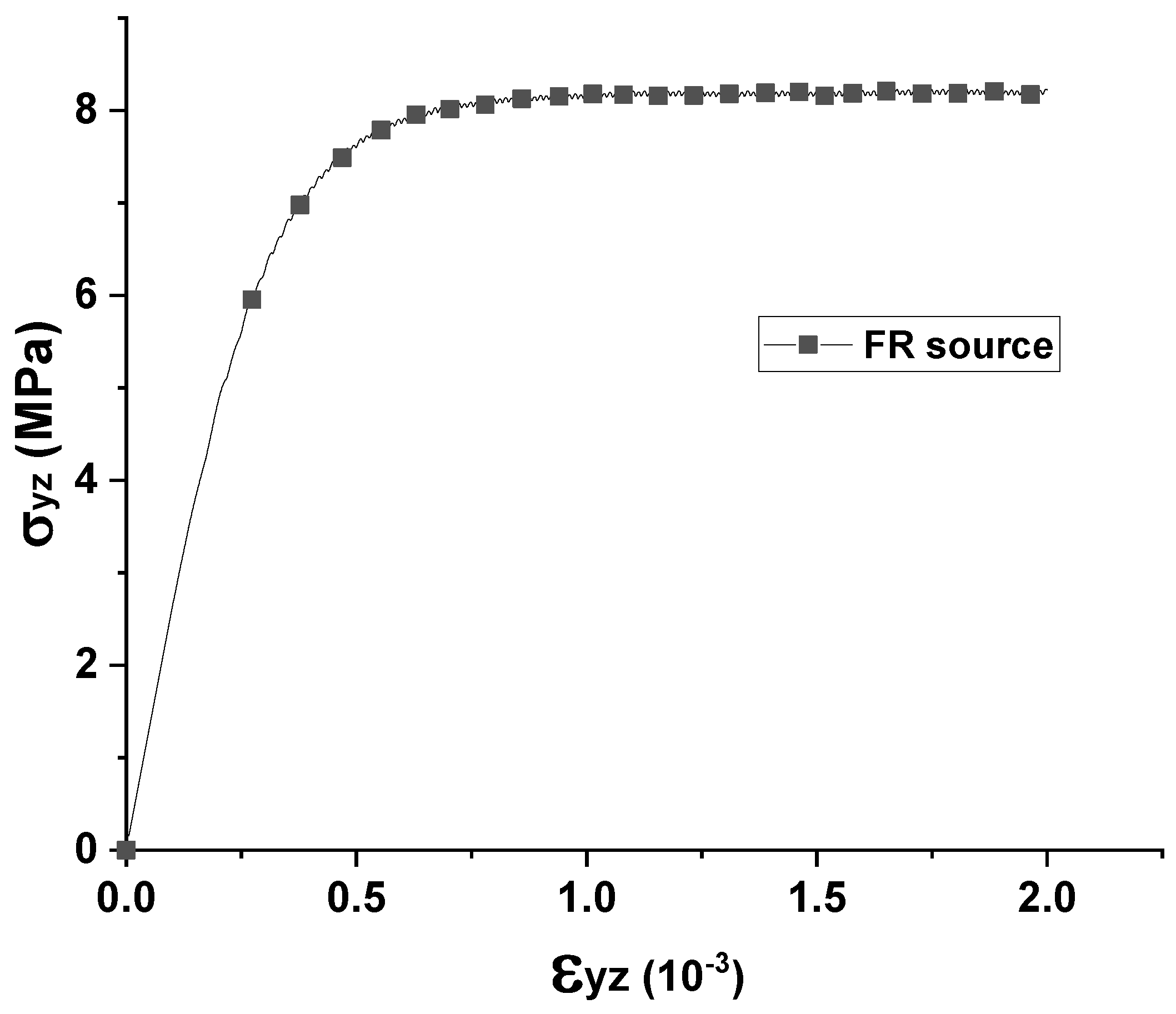
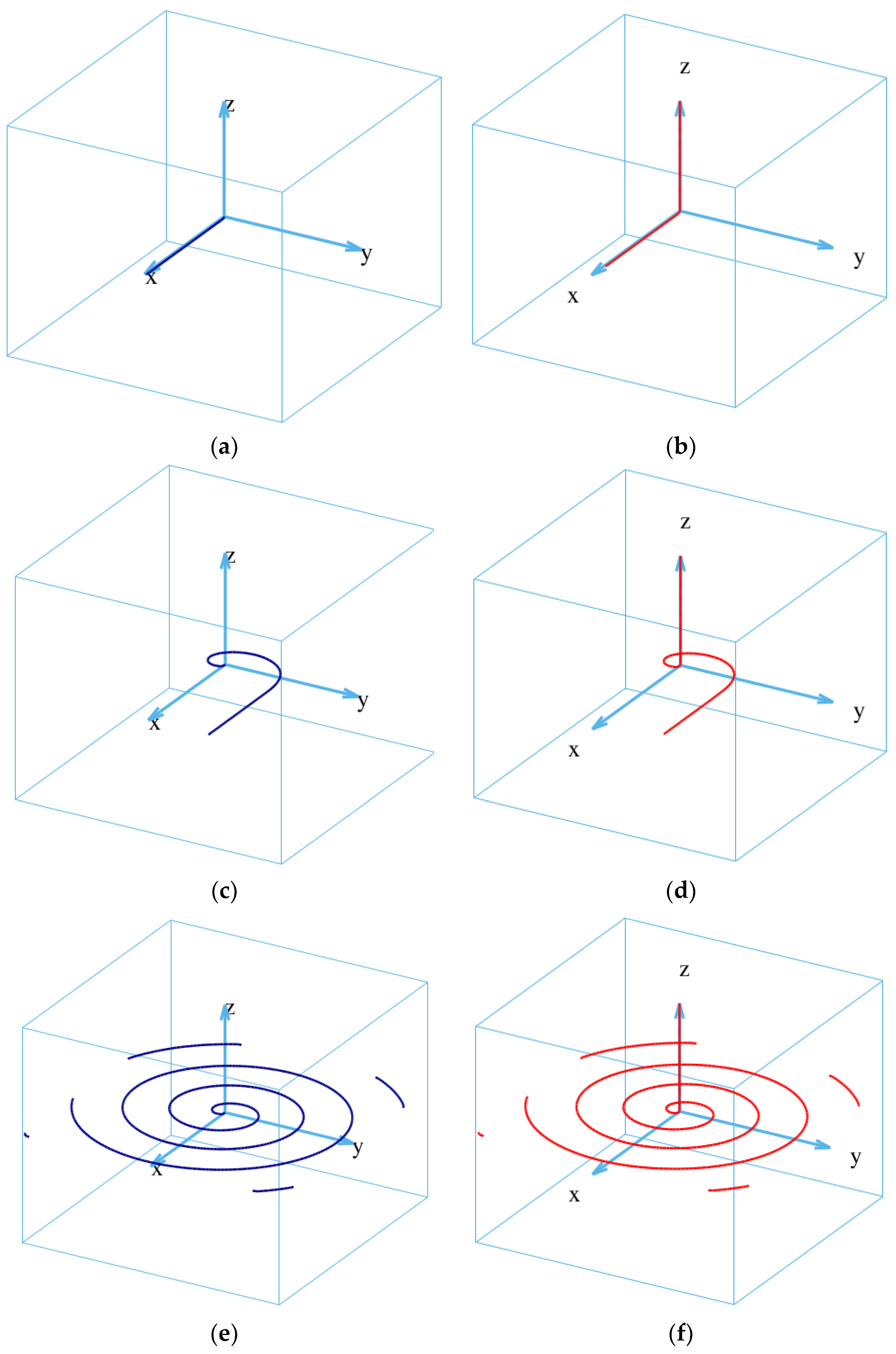
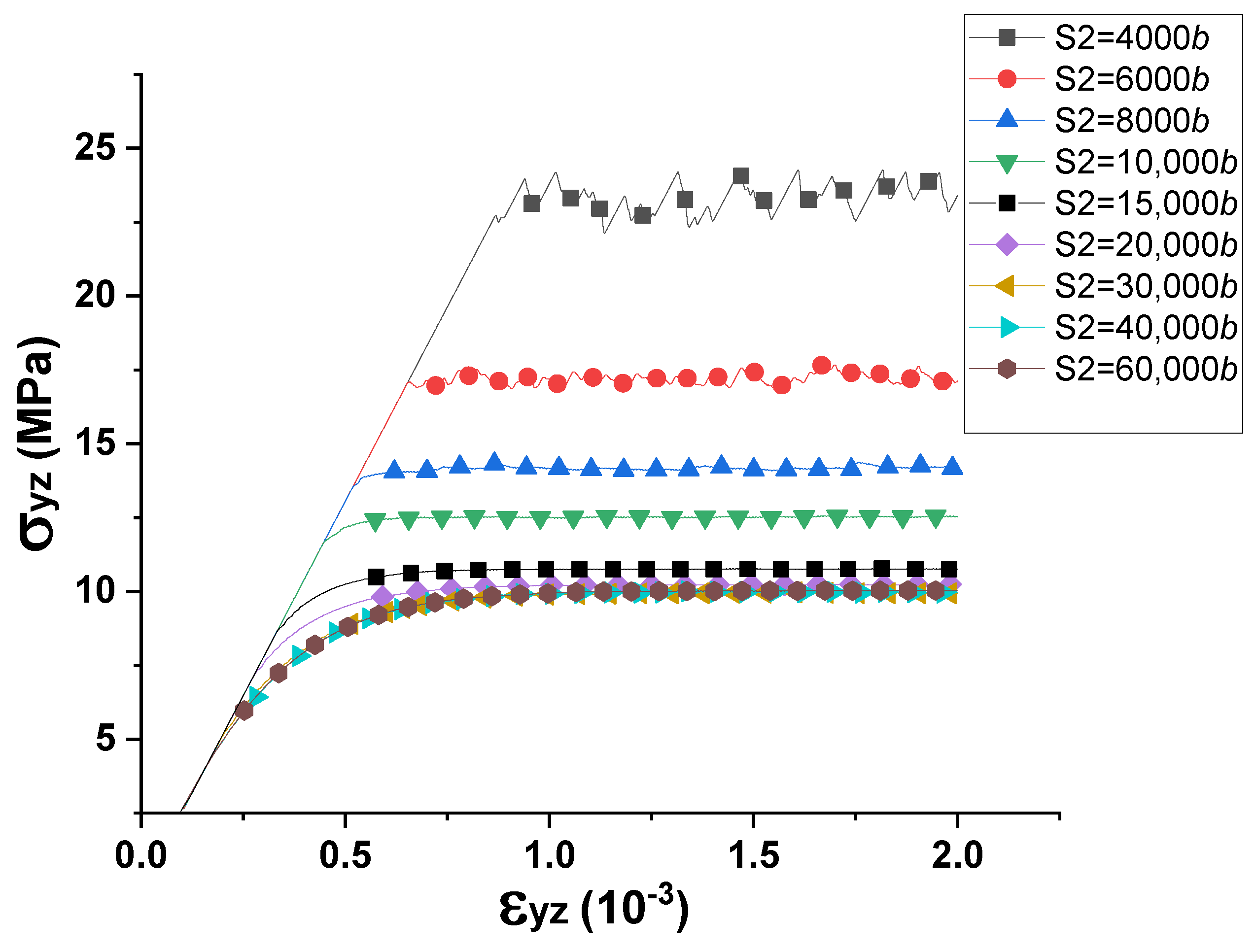

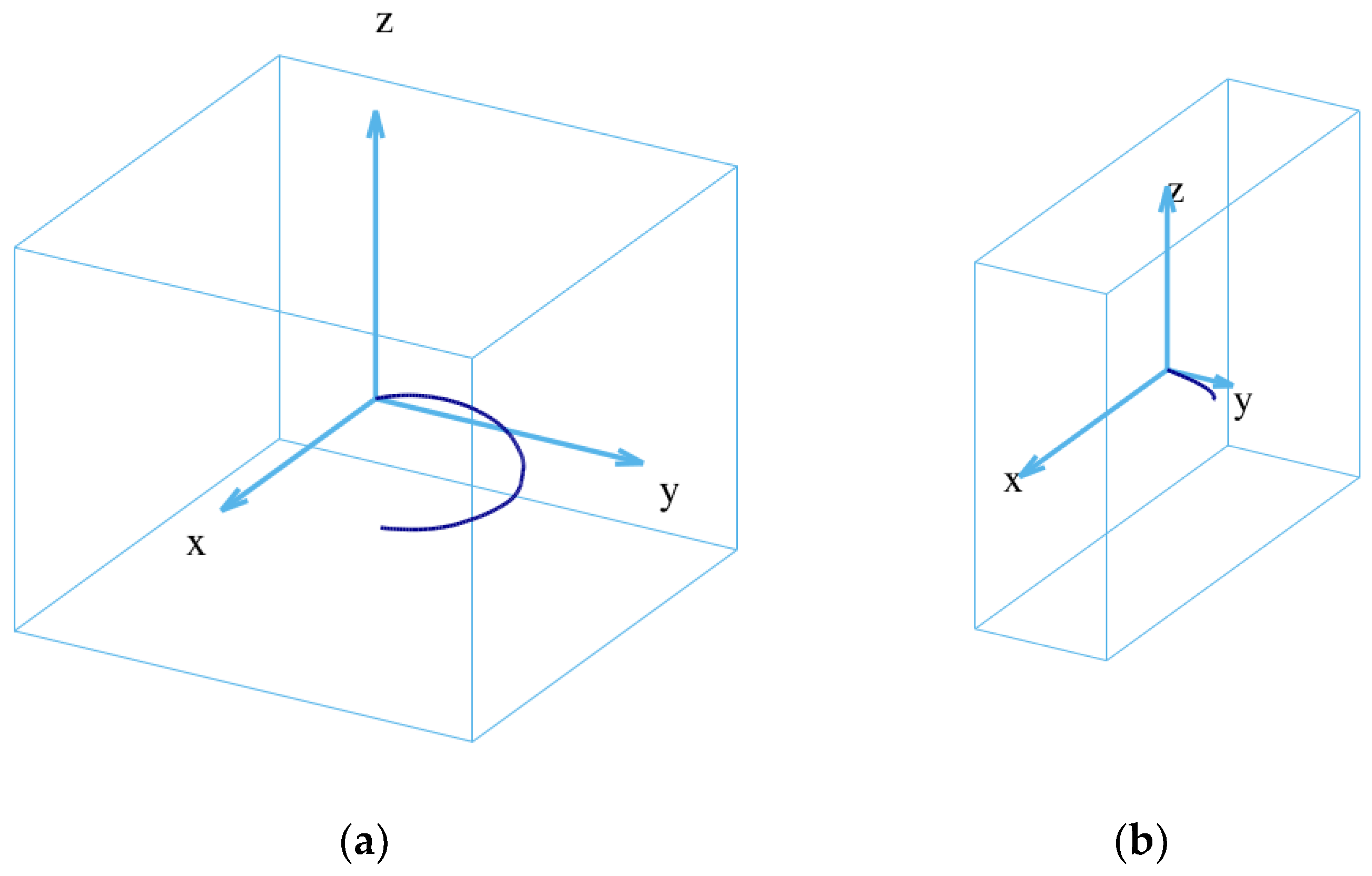
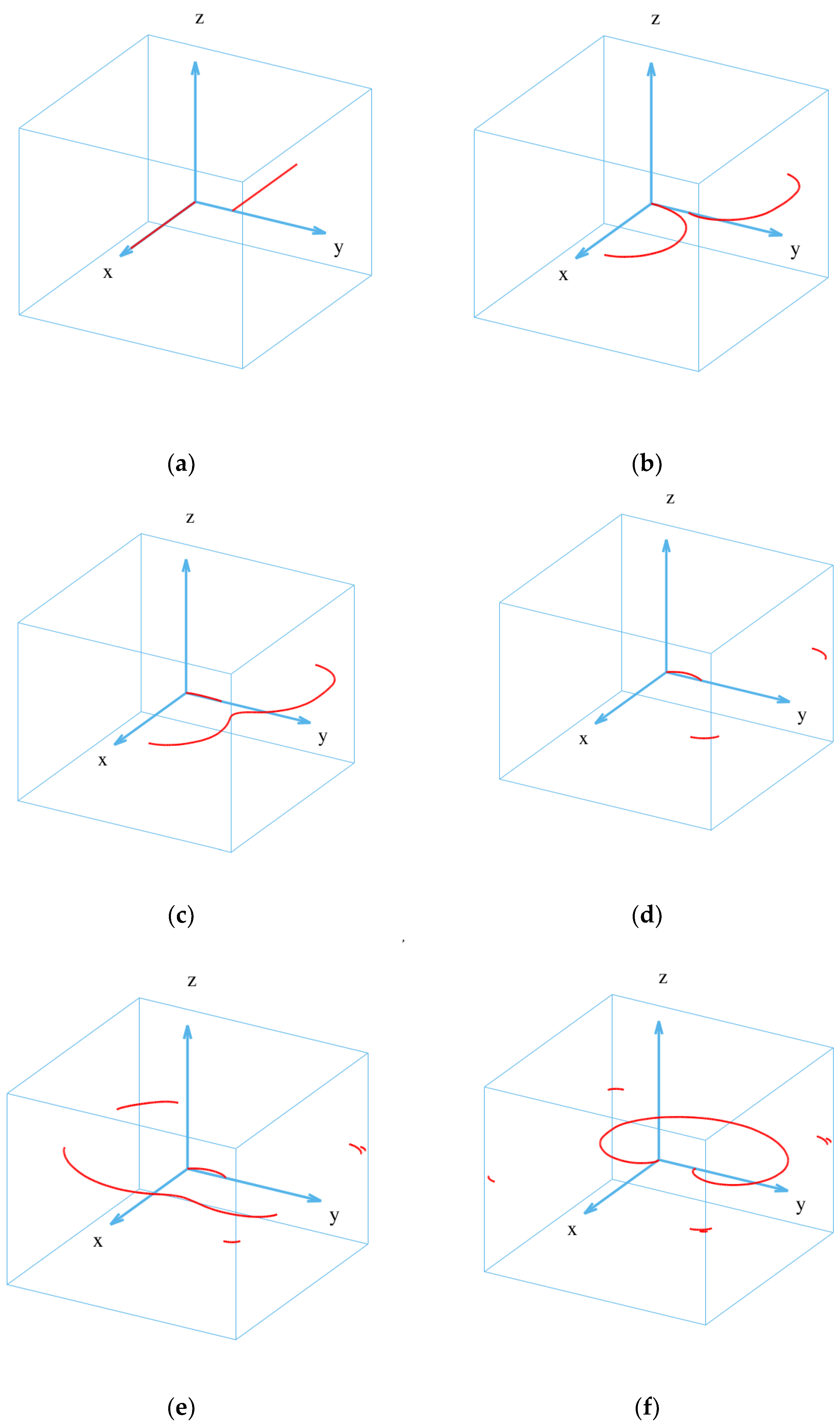

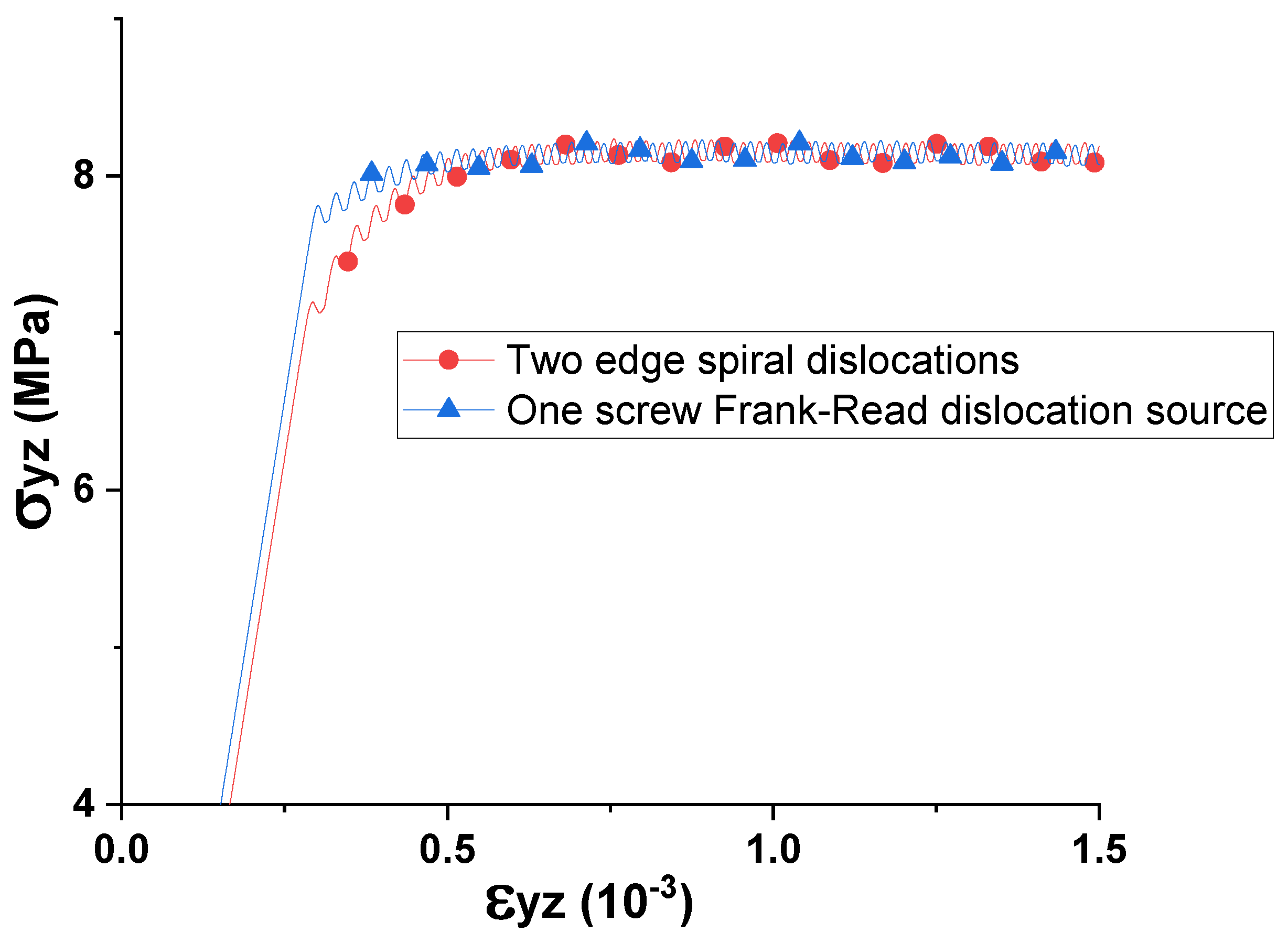
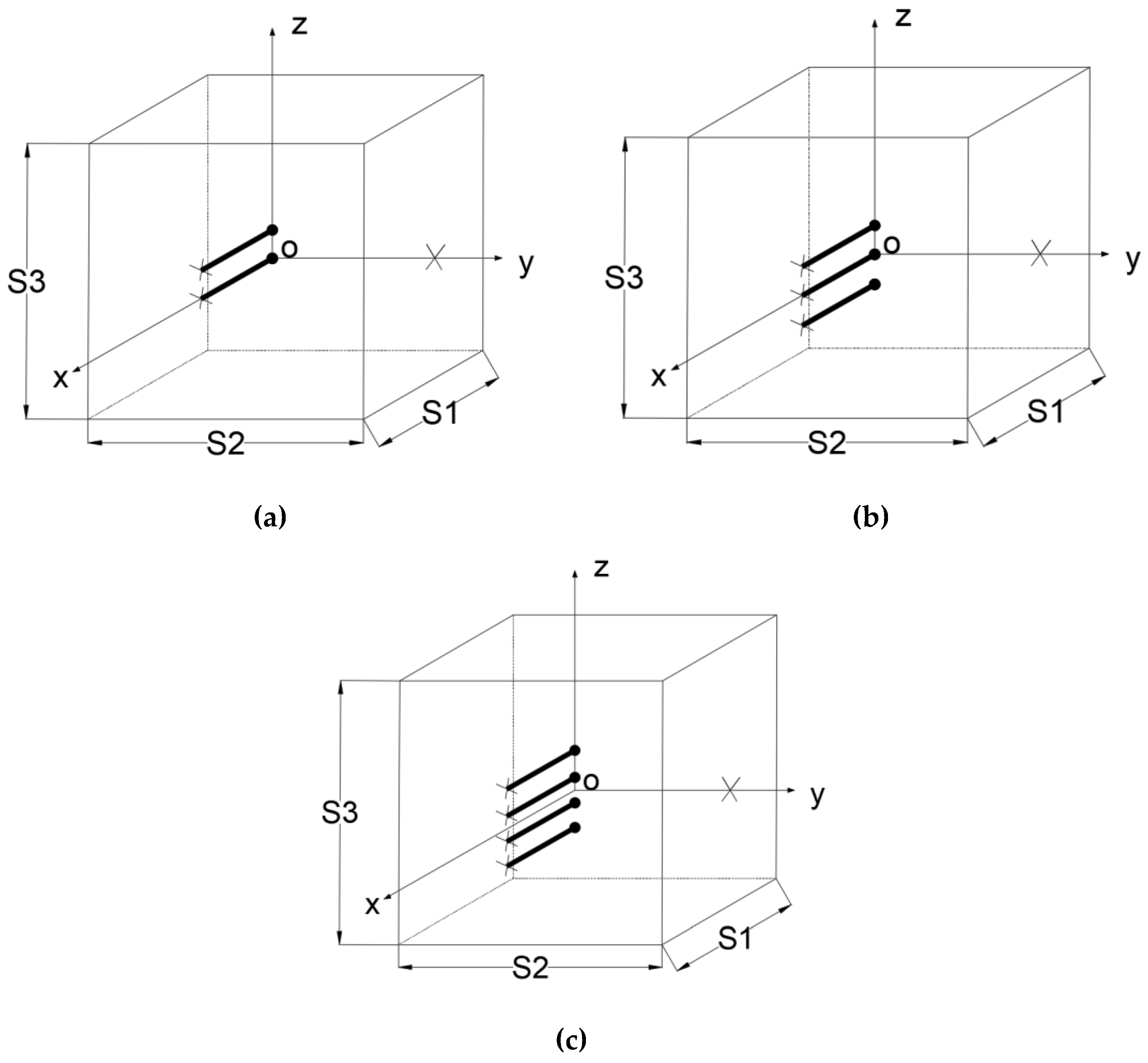


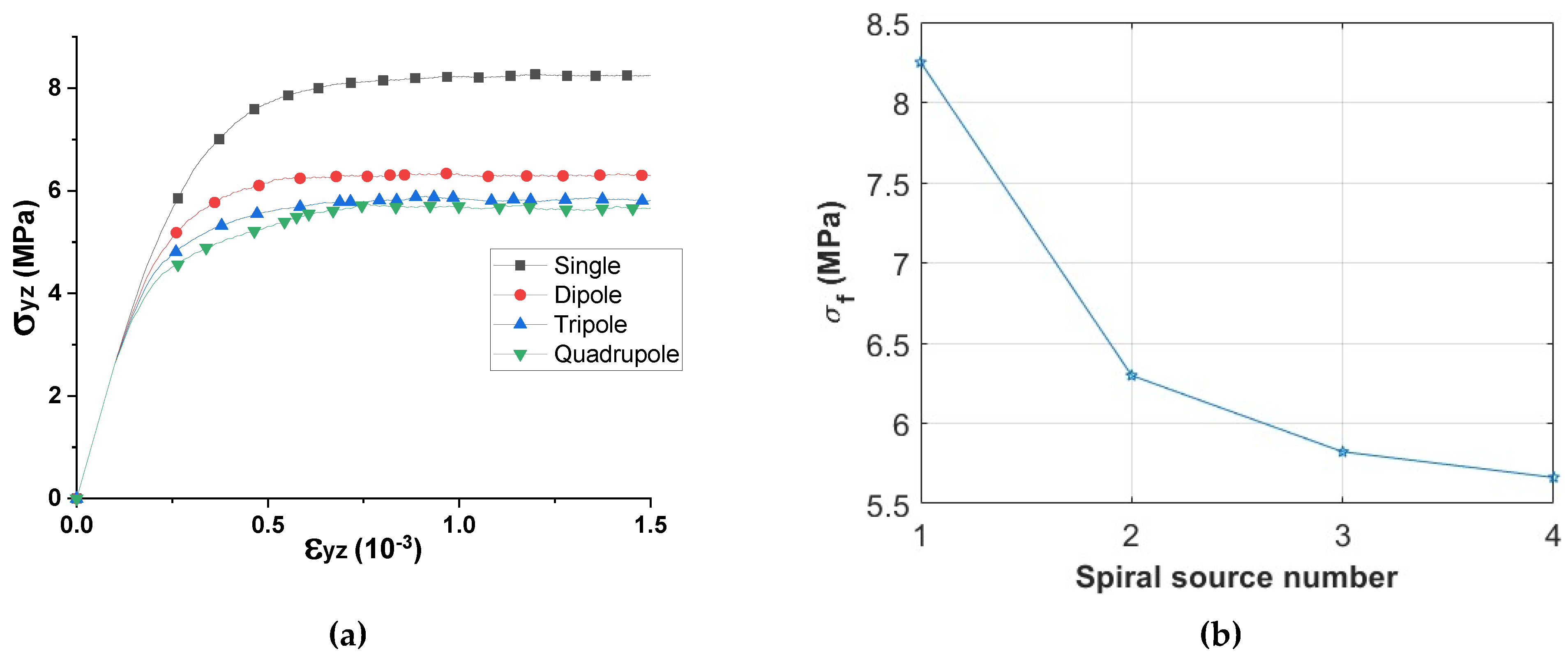

Disclaimer/Publisher’s Note: The statements, opinions and data contained in all publications are solely those of the individual author(s) and contributor(s) and not of MDPI and/or the editor(s). MDPI and/or the editor(s) disclaim responsibility for any injury to people or property resulting from any ideas, methods, instructions or products referred to in the content. |
© 2023 by the authors. Licensee MDPI, Basel, Switzerland. This article is an open access article distributed under the terms and conditions of the Creative Commons Attribution (CC BY) license (https://creativecommons.org/licenses/by/4.0/).
Share and Cite
Li, L.; Khraishi, T. An Investigation of Spiral Dislocation Sources Using Discrete Dislocation Dynamics (DDD) Simulations. Metals 2023, 13, 1408. https://doi.org/10.3390/met13081408
Li L, Khraishi T. An Investigation of Spiral Dislocation Sources Using Discrete Dislocation Dynamics (DDD) Simulations. Metals. 2023; 13(8):1408. https://doi.org/10.3390/met13081408
Chicago/Turabian StyleLi, Luo, and Tariq Khraishi. 2023. "An Investigation of Spiral Dislocation Sources Using Discrete Dislocation Dynamics (DDD) Simulations" Metals 13, no. 8: 1408. https://doi.org/10.3390/met13081408



